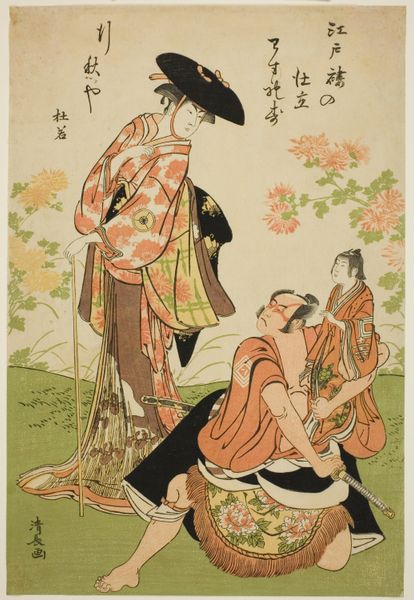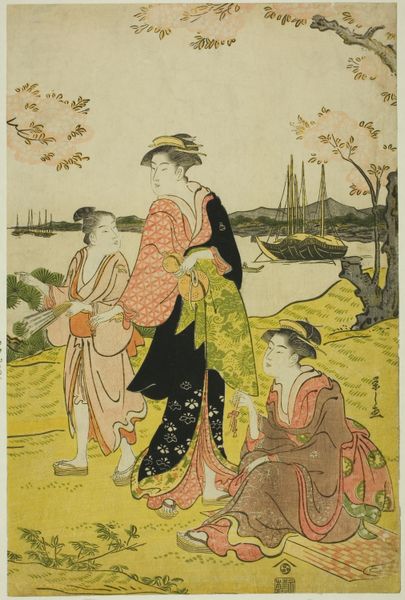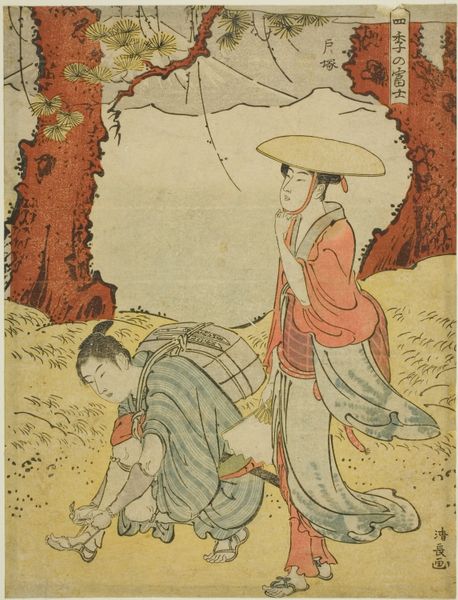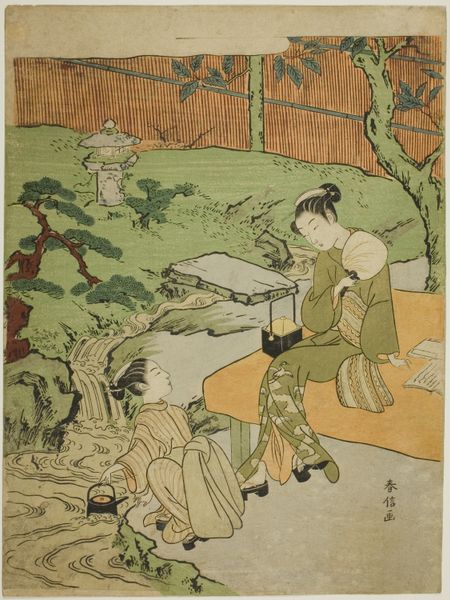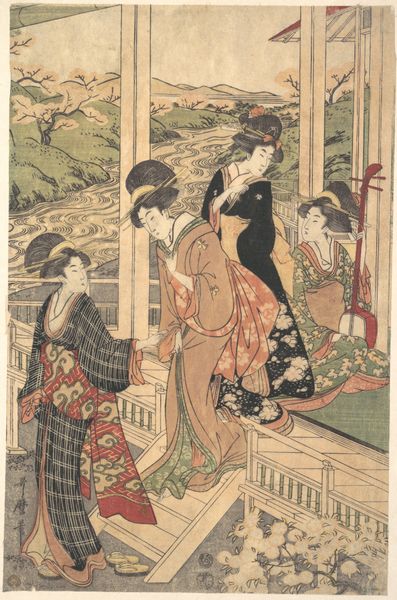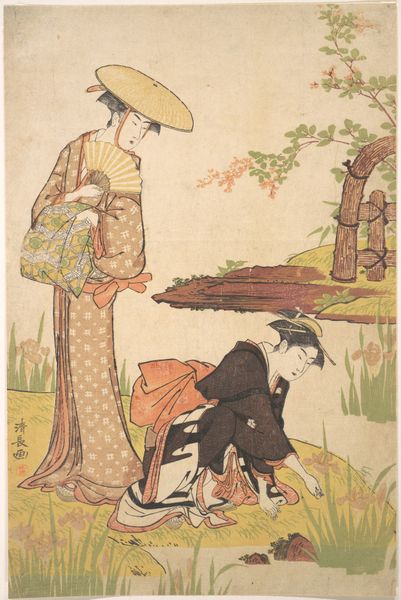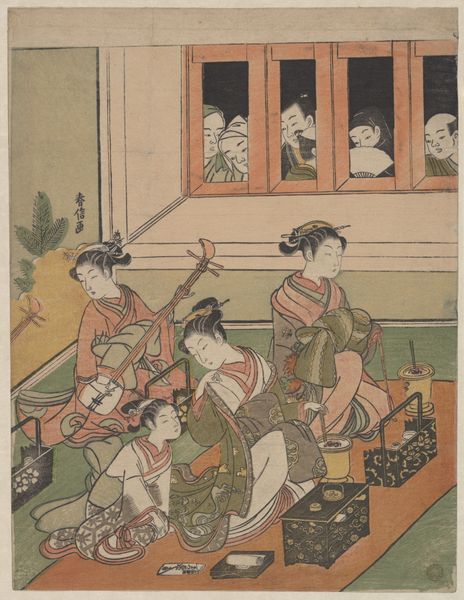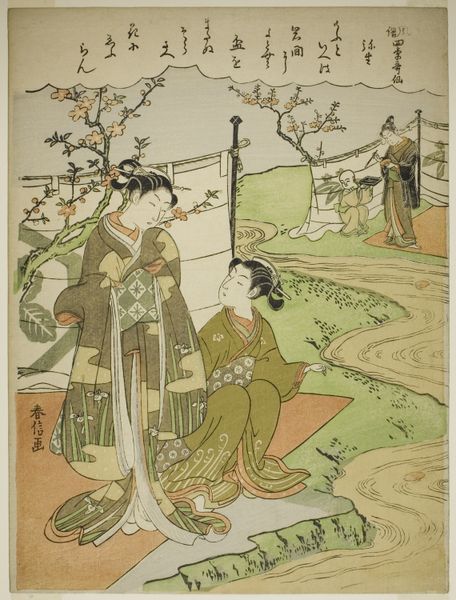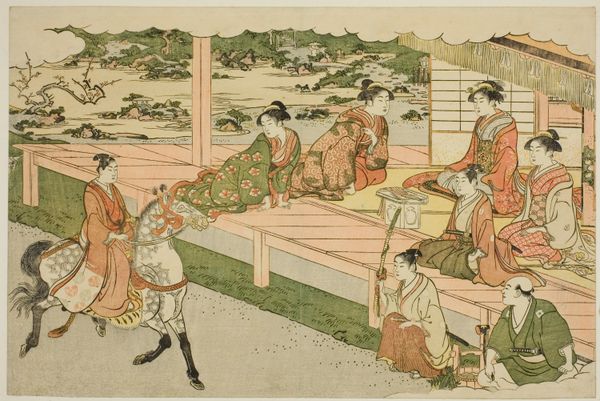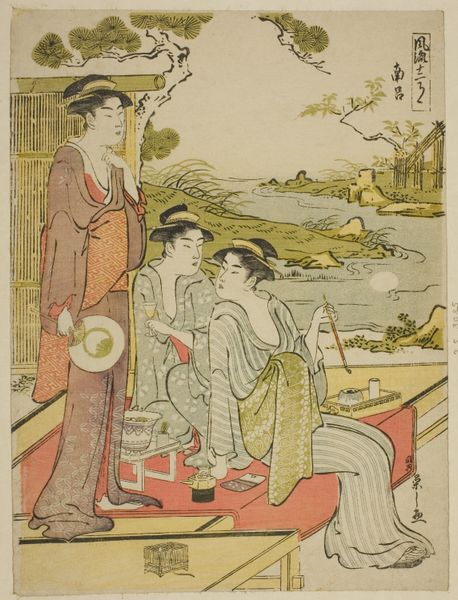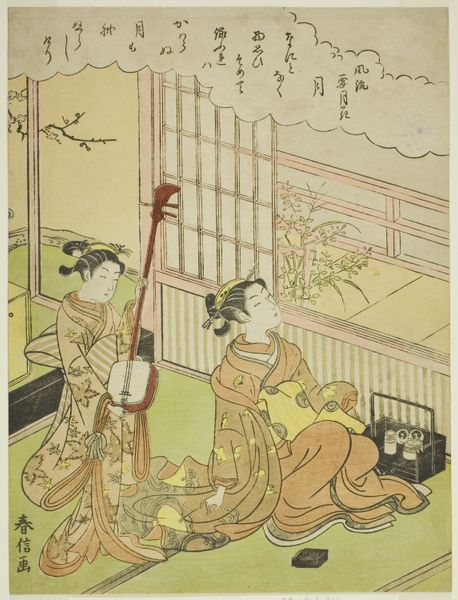
print, woodblock-print
#
ink painting
# print
#
asian-art
#
landscape
#
ukiyo-e
#
japan
#
figuration
#
woodblock-print
#
genre-painting
#
watercolor
Dimensions: 37.9 × 25.4 cm (14 15/16 × 10 in.)
Copyright: Public Domain
Editor: So, we're looking at *A Picnic Party*, a color woodblock print by Katsukawa Shunchō, made sometime between 1785 and 1795. The landscape and the figures almost seem to blend into each other in soft hues. It's like a dream. How might this scene reflect the cultural norms of its time? Curator: It's crucial to see this work within the context of ukiyo-e and its rise alongside a prosperous merchant class in Edo period Japan. These prints were essentially "popular art," catering to the tastes and desires of urban dwellers. This particular print depicts a seemingly leisurely scene, yet the details invite closer inspection of the social codes at play. Do you notice anything about the composition that seems significant? Editor: Well, the women seem to be the focus. The men are almost relegated to the side. And there's a lot of attention on their clothing and adornments. Curator: Exactly! The emphasis on the women, their fashionable attire, and the suggestion of a sophisticated, even sensual, outing points to a culture that, while regulated by strict social hierarchies, was also fascinated by the floating world – a realm of pleasure, entertainment, and, for some, a blurring of social boundaries. These prints acted as both mirrors and fantasies. They showcased idealized versions of contemporary life, but also provided glimpses into worlds that were, for many, inaccessible. The picnics in Ukiyo-e art is all about enjoying the four seasons, but there were restrictions around it, such as not drinking sake too openly in public or getting too loud, how does the imagery of enjoying nature function under these rules? Editor: That's fascinating! It makes me rethink the print not just as a pretty scene but as a commentary on the era's social dynamics. So, ukiyo-e prints become little documents of permitted vices! Curator: Precisely! And how those vices were presented, consumed, and controlled speaks volumes about the complexities of Edo society. Next time, note how galleries display pieces like this together, or separately and what statements curators want to make when staging art history.
Comments
No comments
Be the first to comment and join the conversation on the ultimate creative platform.
